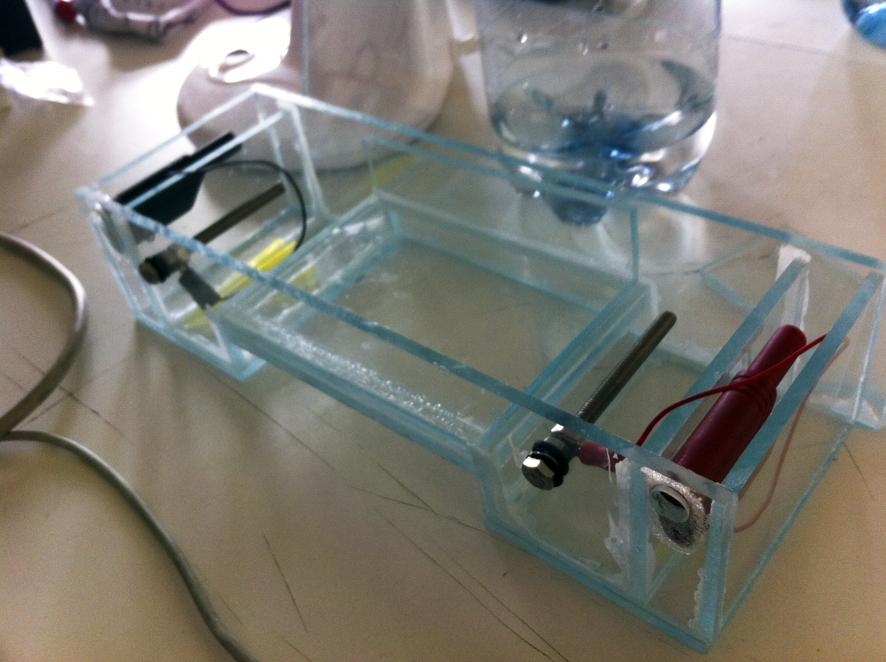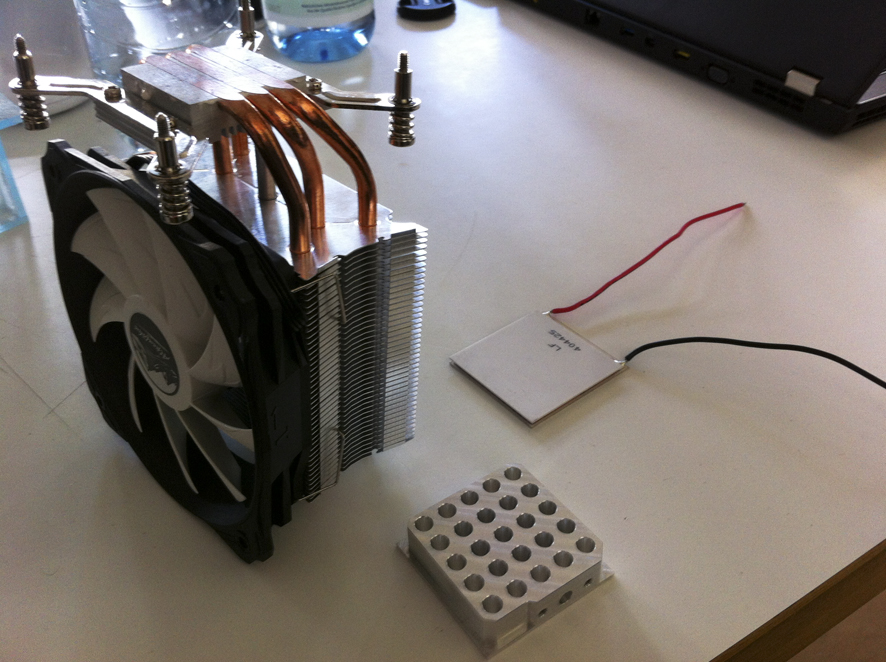mNo edit summary |
mNo edit summary |
||
| Line 13: | Line 13: | ||
[[File:PRC_Items.jpg]] | [[File:PRC_Items.jpg]] | ||
These are the essential components for building this PCR Machine. A cooling element (the large fan). A heating Element, and a | These are the essential components for building this PCR Machine. A cooling element (the large fan). A heating Element, and a custom built metallic part as the holder for the DNA samples to be Amplified. | ||
Before building the machine, we were first educated on what is a PCR and the related microbiological concepts. | Before building the machine, we were first educated on what is a PCR and the related microbiological concepts. | ||
| Line 25: | Line 25: | ||
[[File:Ag_Gel_Electo.jpg]] | [[File:Ag_Gel_Electo.jpg]] | ||
The teams own self build Gel chamber. We later construct one from a lunch box. | |||
Revision as of 01:14, 2 March 2016
Mycelium Presentation (coming soon)
Mycelium growth (coming soon)
D I Y DNA
PCR Workshop with Philip Bayer from the Heidelberg Life science Lab (25th - 28th Feb) 2016
Hands on Citizen Science, exploration of homemade alternative devices. DIY BioTech.
The team from Heidelberg spent four days with us (students from Media art and Media Architecture) to build three PRC Machines, based on their prototype for introducing and teaching PCR.
These are the essential components for building this PCR Machine. A cooling element (the large fan). A heating Element, and a custom built metallic part as the holder for the DNA samples to be Amplified.
Before building the machine, we were first educated on what is a PCR and the related microbiological concepts.
"The polymerase chain reaction (PCR) is a technology in molecular biology used to amplify a single copy or a few copies of a piece of DNA across several orders of magnitude, generating thousands to millions of copies of a particular DNA sequence. Developed in 1983 by Kary Mullis, PCR is now a common and often indispensable technique used in medical and biological research labs for a variety of applications. " - wikipedia
With the help of a heat-stable DNA polymerase, (in this case) Taq polymerase (an enzyme originally isolated from the bacterium Thermus aquaticus), and other microbiological tools, the PRC allows you to replicate and copy specific sections of DNA code (thanks to Primers).
Once the polymerase and Primers (through the PCR Cycles) have amplified the original DNA sample, one can then analyse this using ' agarose gel electrophoresis', a DNA analysis method.
 The teams own self build Gel chamber. We later construct one from a lunch box.
The teams own self build Gel chamber. We later construct one from a lunch box.
